Yen Bai is located approximately 155 km northwest of Hanoi. To reach there from the capital, you have several options:
- Bus: The most common and direct option. Regular buses depart from Hanoi to Yen Bai, with a journey of about 5 to 6 hours.
- Private car or taxi: More flexible but more expensive, the journey takes about 4 to 5 hours depending on traffic conditions.
- Motorbike: For more adventurous travelers, you can rent a motorbike in Hanoi and make the journey yourself, but this requires experience and caution on Vietnamese roads.
I almost forgot the train! See the tables below
Travel route: Hanoi to Yen Bai
| Destination |
Train SP3 |
Train SP1 |
Train LC3 |
Train SP7 |
| Hanoi |
22:00 |
21:30 |
06:10 |
22:30 |
| Yen Bai |
02:23 |
01:40 |
11:00 |
03:00 |
Travel route: Yen Bai to Hanoi
| Destination |
Train SP4 |
Train SP2 |
Train LC4 |
Train SP8 |
| Yen Bai |
01:28 |
00:36 |
14:47 |
23:38 |
| Hanoi |
05:22 |
04:45 |
19:32 |
04:20 |
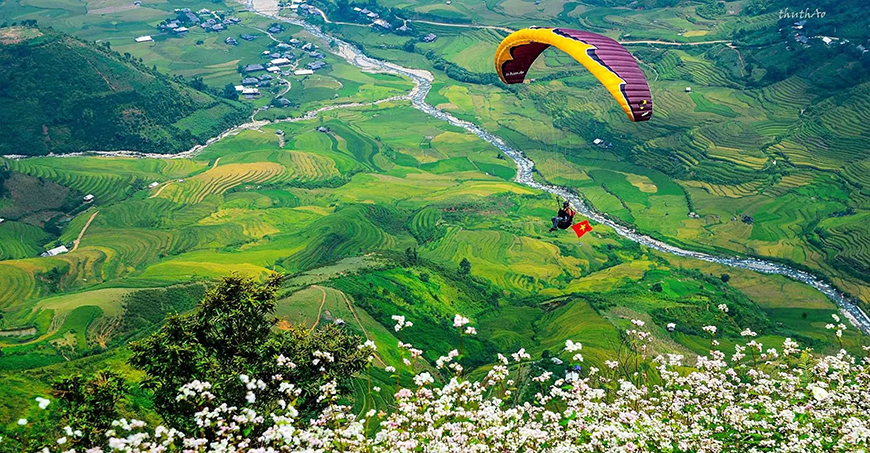
Visit Yen Bai durieng the dry season - Source : Vietnam Travel
When to go to Yên Bái?
The best time to visit Yên Bái is f
rom September to April. During this season, the weather is mild and the terraced rice fields are at their peak. The months of October and November are particularly popular for their autumn colors.
However, the choice of when to visit Yên Bái will mainly depend on the landscapes you wish to explore:
September to November: The golden season of rice fields. The terraces of Mu Cang Chai are adorned with magnificent golden hues, offering an unforgettable sight.
May-June: If you prefer to admire flooded rice fields reflecting the sky like mirrors, this is the ideal period.
Rest of the year: Even outside these periods, the landscapes of Yên Bái remain stunning. You can enjoy the greenery of the rice fields or the blooming fruit trees.
Where to stay and eat in Yên Bái?
Accommodation in Yên Bái is varied and caters to all budgets. You will find hotels, hostels, and homestays. Homestays are particularly recommended for an authentic cultural immersion. The local cuisine is delicious and diverse, highlighting fresh products from the region.
Local communities, mainly composed of ethnic minorities such as the H'mong, Dao, and Thai, are known for their hospitality. Don't hesitate to participate in local activities and discover their traditional crafts.
Regarding dining, you can enjoy delicious local dishes in small restaurants or with locals. Specialties not to be missed include black rice, mountain vegetables, and forest products.
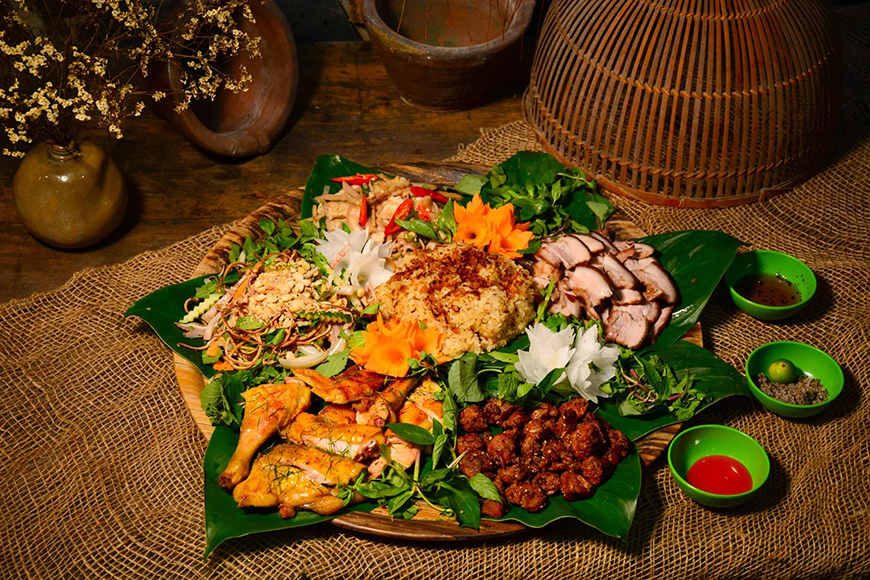
Yen Bai, a paradise for food lovers - Source : Internet
Local communities
Yên Bái is a true cultural melting pot where many ethnic minorities coexist, each with their own customs and traditions. Among the most represented are:
- H'mong: Known for their colorful embroideries and traditional costumes, H'mong women are true artists.
- Dao: Often called "Red Dao" due to their costumes, the Dao are renowned for their music and dances.
- Thai: The Thai are known for their stilt houses and agricultural expertise.
Itinerary 1: Trek in the terraced rice fields of Mu Cang Chai
The most famous trek in the region is undoubtedly the one through the terraced rice fields of Mu Cang Chai.
✓ Level: Moderate to difficult
✓ Distance: Variable depending on the routes, but expect around 10-12 km per day
✓ Elevation gain: Significant (500-700 m per day)
Highlights: Spectacular landscapes, traditional villages, immersion in local culture.
This itinerary will take you to the heart of the terraced rice fields of Mu Cang Chai, one of the most beautiful landscapes in Vietnam. The route passes through several ethnic villages, offering a unique cultural immersion. Plan for 2 to 3 days to fully enjoy the experience.
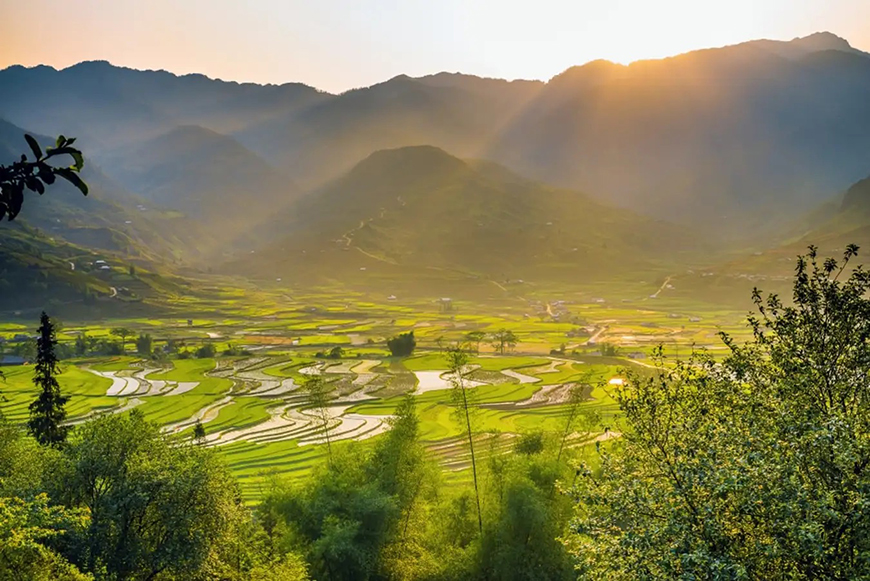
Serene Tu Le's valley - Source : Internet
As a lesser-known alternative to Mu Cang Chai, I suggest exploring:
The trails of Tu Le
For those seeking an off-the-beaten-path experience, trekking in the Tu Le valley is an excellent option.
✓ Distance: about 8-10 km per day
✓ Elevation gain: 300-500 m per day
✓ Difficulty: Easy to moderate
Highlights:This less-visited trek offers spectacular views of the rice fields and surrounding mountains. You will pass through Thai and H'mong villages, with the opportunity to stay with locals. The route is easier than that of Mu Cang Chai, making it accessible to a wider audience.
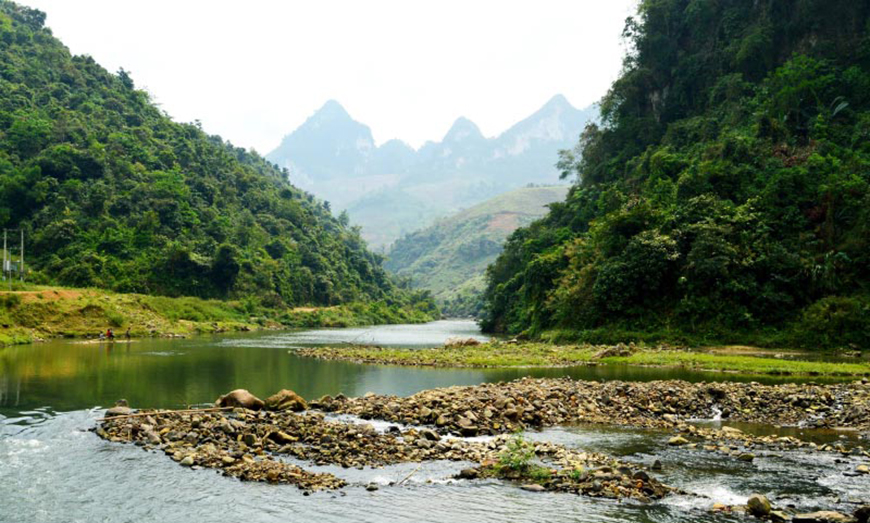
The Chay river, Yen Bay - Source : Internet
Itinerary 2: Bike ride in the Chảy River valley
✓ Level: Easy to moderate
✓ Distance: about 30-40 km
✓ Elevation gain: Minimal
Highlights: The route follows the meanders of the river, offering magnificent views of the crystal-clear water and surrounding mountains. You will pass through traditional villages and have the opportunity to stop for refreshing swims.
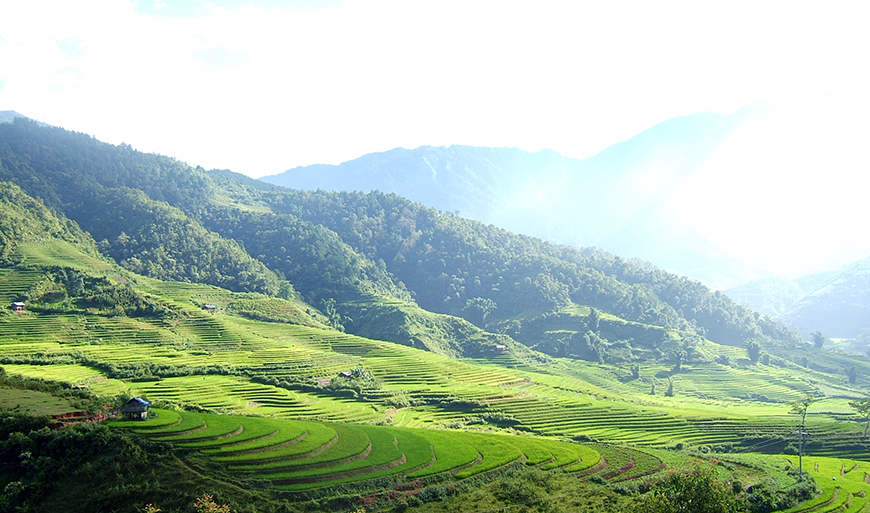
Rice fields in Tram Tau - Source : Pixabay
Alternative: The scenic route of Tram Tau
For those looking for a more challenging ride, the scenic route of Tram Tau is an excellent option.
✓ Distance: about 50-60 km
✓ Elevation gain: 800-1000 m
✓ Difficulty: Hard
Highlights:This route offers spectacular views of the mountains and valleys of Yen Bai. It is more physically demanding but rewards cyclists with breathtaking panoramas and exhilarating descents.
Possible extensions
Yen Bai province is ideally located to explore other fascinating regions of northern Vietnam. If you have more time, you can extend your stay and explore neighboring provinces like
Hà Giang and its famous loop to travel by motorcycle or bicycle, or venture into
Hoang Lien National Park. Home to Vietnam's highest peak, Fansipan, this park offers exceptional hiking opportunities. These regions offer equally spectacular landscapes and rich cultures.
Conclusion
With its spectacular landscapes, cultural richness, and authenticity,
Yên Bái is an ideal destination for travelers seeking authenticity and adventure. Whether you are passionate about
trekking or
cycling, Y
ên Bái has something for everyone.
Have a look to our